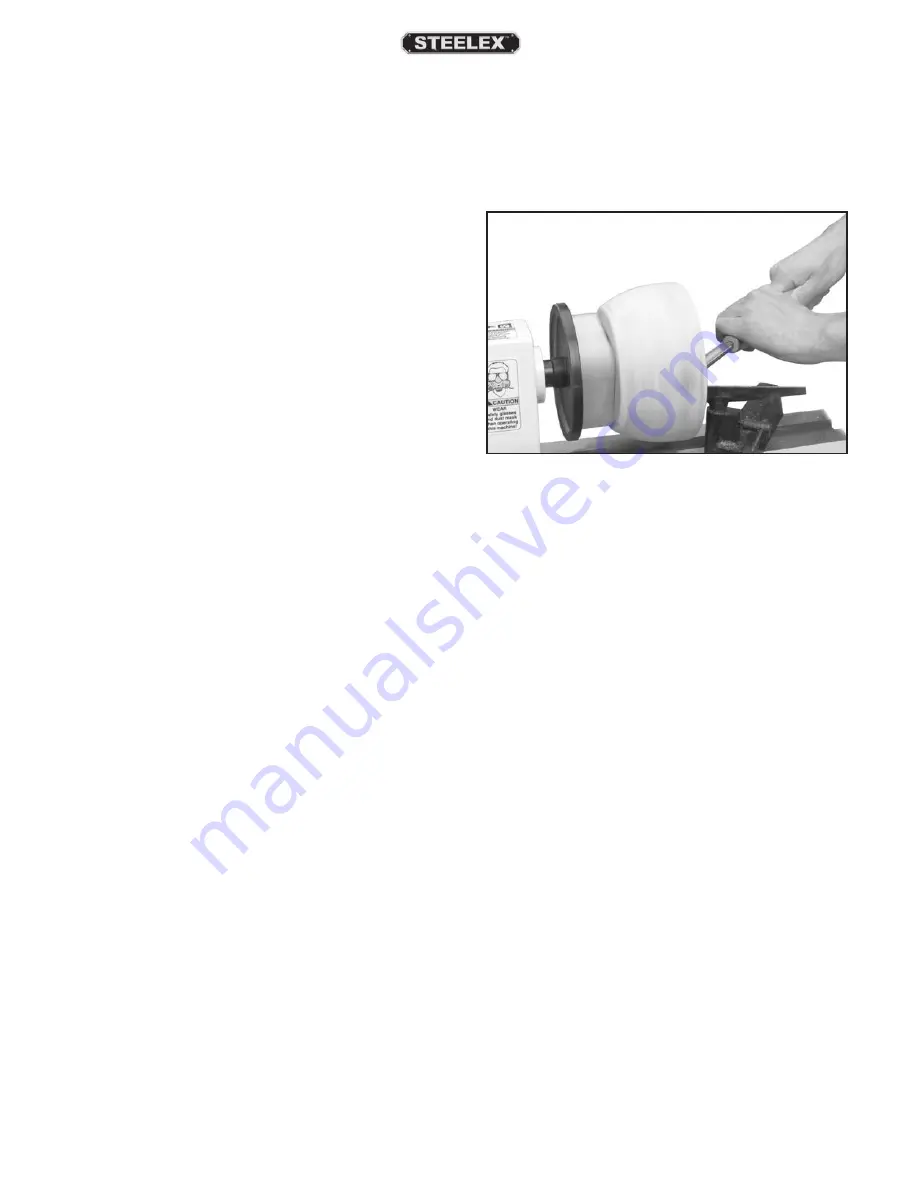
-24-
ST1008 Mini Wood Lathe
Spindle Turning Tips:
•
When turning the lathe ON, stand to the side of
the spinning direction until the lathe reaches full
speed and you can verify that the lathe will not
throw the workpiece.
•
Select the right speed for the size of workpiece
you are turning. Use slower speeds for large
workpieces (4" diameter and over); use the mid-
dle range speeds for medium sized workpieces
(2" to 4" diameter); and use faster speeds for
small sized workpieces (under 2" in diameter).
•
Keep the turning tool on the tool rest the ENTIRE
time that it is in contact with the workpiece.
•
Learn the correct techniques for each tool you
will use. If you are unsure, read books or maga-
zines about lathe techniques and seek training
from experienced users.
•
Turn the lathe OFF immediately if the workpiece
vibrates excessively. Check to make sure the
workpiece is centered and balanced. Remove
the workpiece and trim excess waste off corners
with a bandsaw or table saw to reduce vibration.
Make sure workpiece is securely attached in the
setup.
Faceplate Turning
Faceplate turning (Figure 31) is when a workpiece
is mounted to the 3" faceplate, which is mounted to
the headstock spindle. This type of turning is usually
done with open-faced workpieces like bowls.
To mount your workpiece to the faceplate:
1. Find the center of your workpiece in the same
manner as when spindle turning.
2. Cut off the corners of the workpiece.
3. Center the faceplate on the workpiece and
attach it through the faceplate holes with wood
screws.
4. Thread the faceplate onto the headstock spindle
and tighten securely.
Note:
If screws cannot be placed in the workpiece,
then a backing block can be glued to the workpiece
and attached to the faceplate with screws.
Figure 31. Typical faceplate turning operation.


































